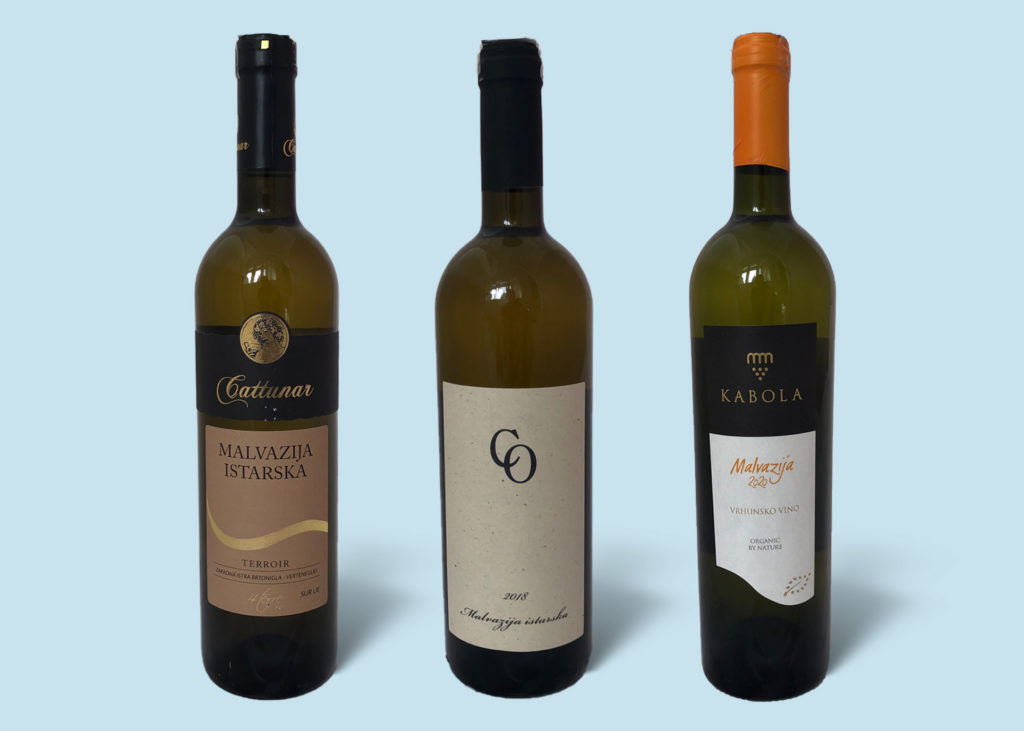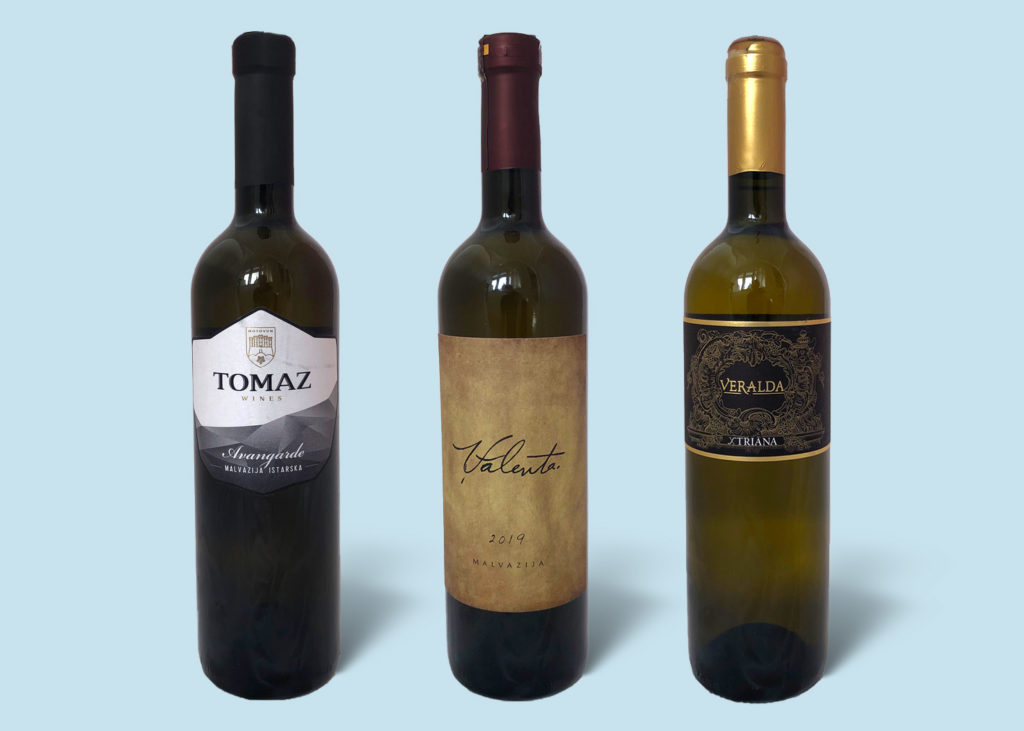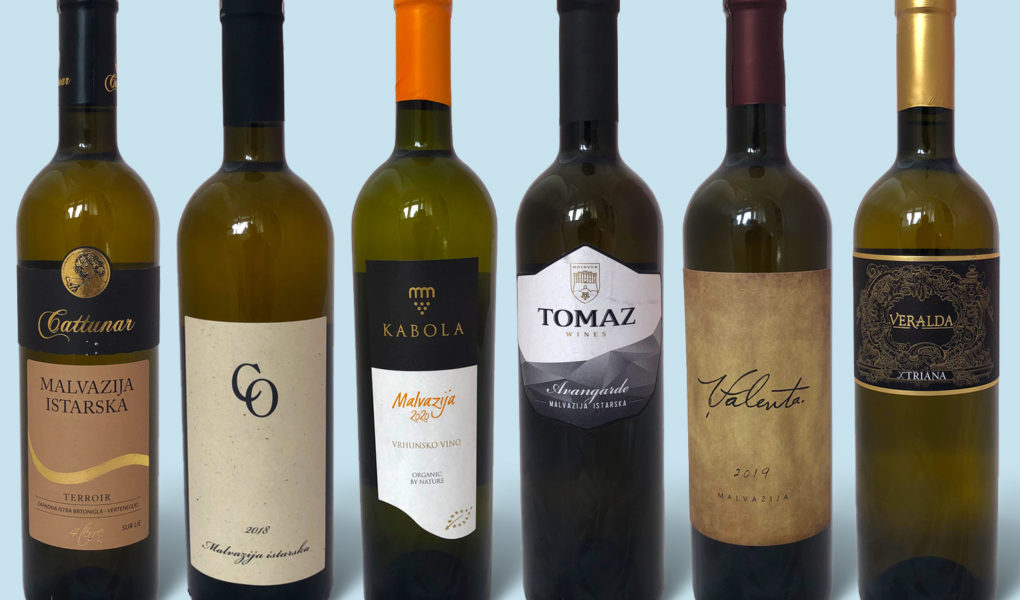Malvazija Istarska is the star white grape in Istria. Every winemaker there makes at least one, and each is different. We blind-tasted six bottles to see what makes this grape unique.
As it turns out, Istrian Malvazija is something special. The Malvasia grape variety is actually as many as 20 varieties grown all over Italy, in Greece, Portugal, Spain, California, Slovenia and Croatia. Many of these are completely unrelated to one another—they have simply been called Malvasia historically. It is the advent of DNA sequencing that has allowed us to distinguish them all. There seem to be three Malvasias in Croatia: Malvazija Istarska (the subject of our tasting); a second type grown in Dalmatia and the islands, where it is called Maraština or Rukatac; and a third, called Malvasija Dubrovačka, which is grown in the Konavle region around Dubrovnik. The differences in spelling will keep you on your toes!
Malvazija Istarska originated in Istria and is one of the more aromatic, high-quality grapes bearing the M-word. Winemakers in Istria transform this quality material into everything from sparkling wine to light fresh wine, serious versions aged on the lees, orange wines and intense sweet wines. In addition to all the stylistic differences to choose from, Istria offers four distinct soils that each give Malvazija slightly different characteristics. The most noticeable soil is the bright, terra-cotta red one, rich in iron. There are also white, gray and black soils, and the soil may vary from one hillside to the next.
For this tasting, we chose fresh, dry Malvazijas. These are perfect aperitif wines and pair beautifully with summery foods like vegetable salads, cold chicken, grilled fish and seafood.
The Tasting
Note: This tasting is meant to be readable, not comprehensive. We tasted six wines, not 60. The wines are listed in alphabetical order by producer. A star (*) indicates wines that stood out for their quality and flavor on the day of the tasting. Prices are those at the winery or winery webshop.

*Cattunar Malvazija Istarska 4 Terre 2019 75 kuna
Made in Brtonigla, which geology has blessed with all four Istrian soils. Wines grown on each type are made separately, then blended for this wine. This is a richer version of Malvazija whose aroma reminded me of walking into a greenhouse. You may taste golden apple, a slight briny note like sea air, and a tiny sour yeasty flavor from aging on the lees. A wine with a lot to offer.
Coronica Malvazija Istarska 2018 72 kuna
“Ripe” is the theme of this wine, with its melon and tangerine flavors, plus a touch of something candied, like white Jolly Rancher, in the middle. When it warms up a bit, honey comes forward—a key flavor in Malvazija that may be stronger here because the wine is a year older. This is the earthiest of the six.
Kabola Malvazija 2020 67 kuna
A light, refreshing style of Malvazija with the flavors of spa water: a touch of cucumber and lemon, fresh rain, light floral notes, minerals. All of this is anchored by a zesty acidity that makes this the perfect salad or white fish wine. Organic.

Tomaz Avangarde Malvazija Istarska 2020 65 kuna
With the lightest body (by a hair) of the wines we tasted, this is the most delicate in flavor as well—in a good way. White flowers and wet stones combine with nicely balanced acidity to deliver a wine that is classically modern and fresh, like white shorts with espadrilles.
*Valenta Malvazija 2019 63 kuna
The beautiful balance of this light-style Malvazija won us over. Fresh green-apple acidity is offset by a tiny caramelized note that may come from lees contact. The earthiness of honey and a touch of sea brine add intrigue. It’s not super-aromatic or showy, it’s subtle. Think Billy Eilish, not Lady Gaga.
Veralda Xtriana 2019 75 kuna
A richer style of wine, this is totally dry but has a fuller texture and deeper flavor of ripe golden fruits such as yellow apple and melon. It has ample acidity to pair with roasted or lightly grilled chicken, and the body to do nicely even with pork. Organic.
Cheers Croatia Magazine conducts wine tastings in the semi-blind format. This means that we know what wines we have, but they are placed in numbered bags so we can’t identify them during the tasting. Wines for tastings are purchased, or occasionally donated by the winery. See the magazine’s Affiliations and Gifts Policy for more information.

